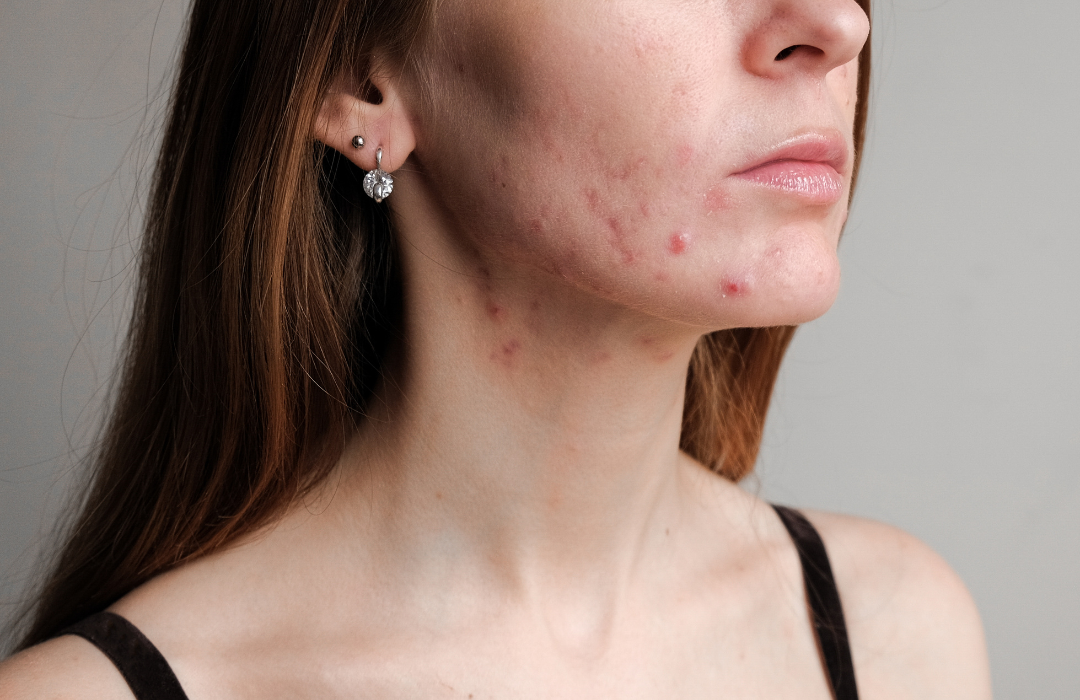Note: As an affiliate, I earn a small commission from qualifying purchases made through links in this post. This helps support my work, but it won't cost you any extra. For more information, please read my full disclosure here.
In this blog, we’ll make it easy to tell the difference between ‘Skin Purging vs Breakouts’ and uncover the truth behind your blemishes!
We’ve all been there, right? You decide to try a new skincare product, full of hope and excitement. And then suddenly, your skin erupts in angry red bumps.
You’re left wondering, “Is this a skin purge, or is it just a regular breakout?”
The confusion can be real, my friends!
You know, I’ve been there too. I used to go through both purging and breakouts, and let me tell you, it was quite a rollercoaster ride.
Pimples, redness, and an unpredictable face had me pretty freaked out. But then, I did some research and figured out that both purging and breakouts can be tamed effectively.
And now, I want to share what I’ve learned with you to help you differentiate purging and breakouts so you can treat them appropriately.
How Do You Know If It’s Purging or Breakout?
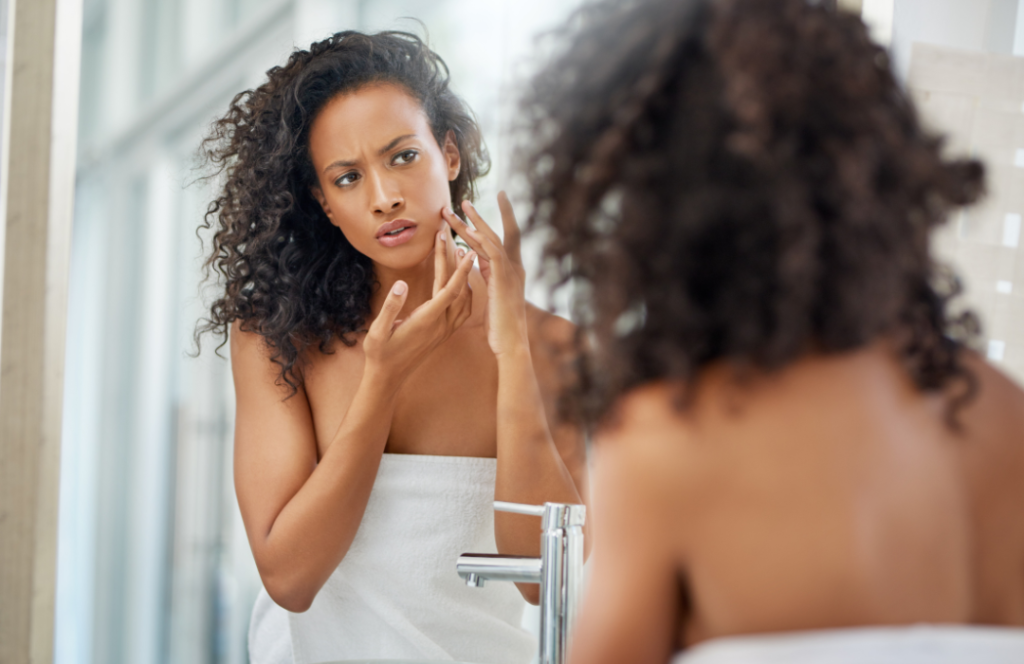
Distinguishing between a skin purge and a breakout can be a bit tricky, but there are some key factors to consider:
| Skin Purging | Breakouts | |
| When do they show up? | They appear shortly after starting a new skincare product. | They’re unpredictable, showing up at any time. |
| Where do they party? | They stick to their favorite spots, where you usually have breakouts. | They love surprises, popping up in different areas of your face. |
| How long is their visit? | They’re just passing through, usually gone in about 4-6 weeks. | They overstay their welcome, lingering for more than a few weeks (1-6 weeks). |
| What’s their style? | They’re uniform, showing up as small whiteheads, blackheads, or tiny pustules. | They’re diverse, bring along red and inflamed pimples, cysts, or nodules. |
| What triggers them? | They’re fans of change, often showing up when you use products that increase skin cell turnover (like retinol) | They’re independent, showing up even if you haven’t introduced any new products. |
What Happens If You Pop a Pimple While Purging?
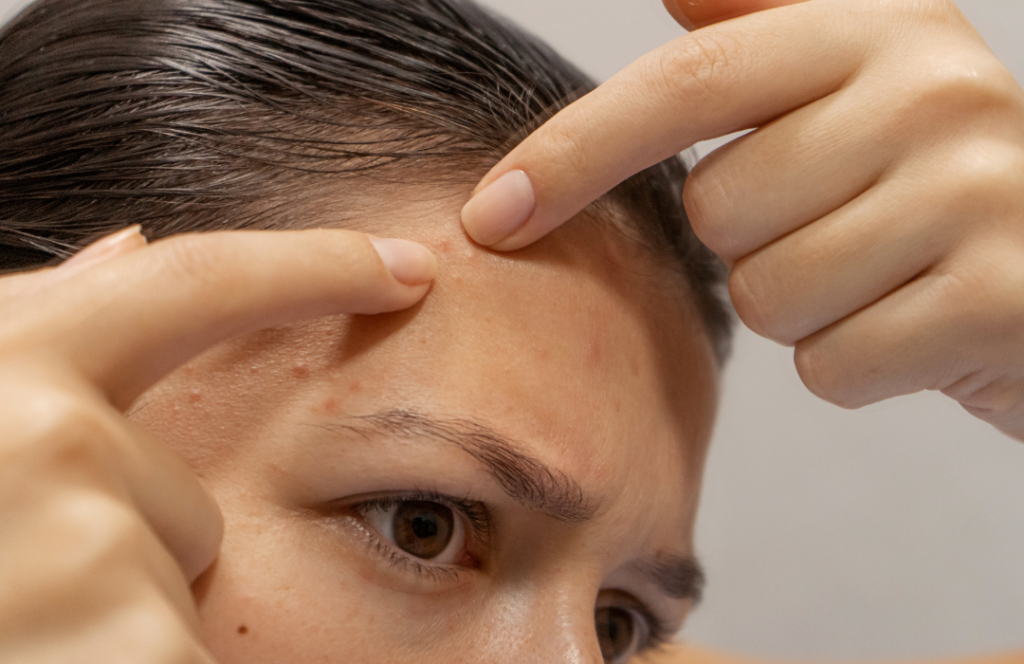
Popping a pimple while your skin is going through a purging phase can be a bit tricky. During purging, your skin is getting rid of stuff clogging your pores because of new skincare products.
If you pop a pimple, you risk making things worse. It might get infected, look redder and angrier, and take longer to heal.
Plus, it could leave a scar. Or even worse, if you squeeze it, you might spread the problem to nearby pores, causing more breakouts.
It’s generally better to leave your skin alone during purging or breakouts. If a pimple is bothering you a lot, it’s best to talk to a dermatologist or skincare expert. They can help you manage it safely without making things more complicated.
How to Avoid Purging
1. Choose a small area to test your product
When deciding to test a new product on your face, it’s wise to choose a limited area for this initial trial. Opt for a spot on your cheek or jaw line, which is less conspicuous and less sensitive.
By doing this, you minimize the potential for a visible adverse reaction and make it easier to assess how your skin responds to the product.
Apply a small amount of the product to the chosen area, avoiding highly sensitive spots like the eyes or lips.
Keep a close eye on this area for a few days, looking for signs of irritation like redness or itching.
If there are no adverse reactions, you can gradually incorporate the product into your full skincare routine.
This careful and phased approach allows you to make an informed decision about using the product on your entire face while reducing the risk of purging.
2. Introduce products gradually
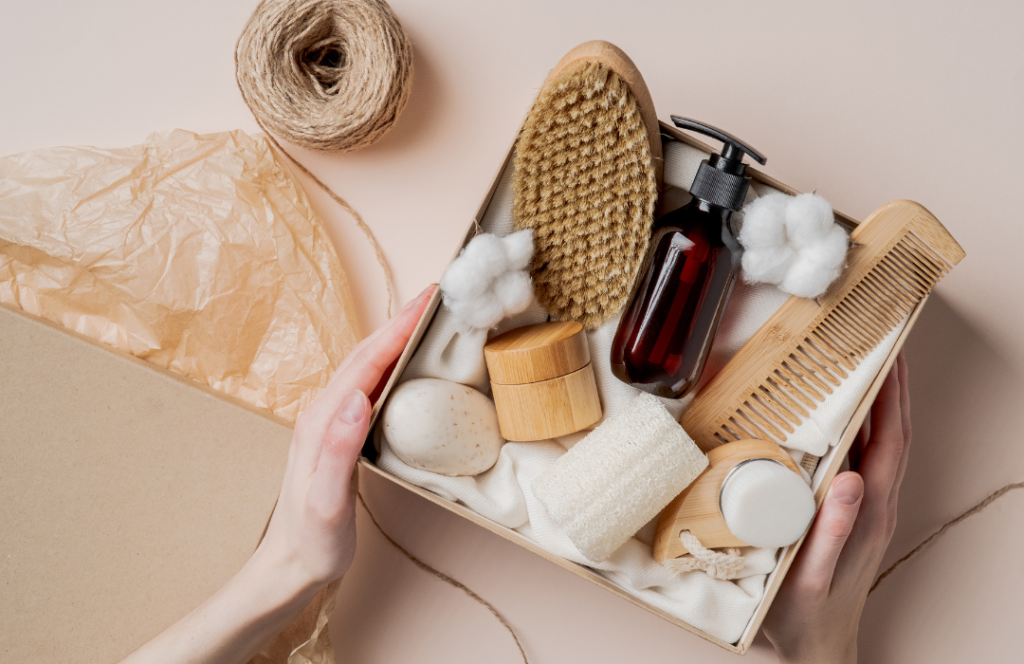
Think of your skincare routine as a slow and steady marathon, not a sprint. Start with one new product at a time, and use it consistently for a few weeks before introducing another.
For example, if you’re adding a serum to your routine, begin by applying it every other day. Once your skin gets used to it, you can gradually increase the frequency. This will give your skin time to adapt without overwhelming it.
3. Choose the right products for your skin type
Selecting the right products for your skin type is crucial. If your skin is prone to oiliness and breakouts, go for non-comedogenic products that won’t clog your pores.
As an example, if you’re looking for a moisturizer, choose one labeled “oil-free.” This type of product is less likely to trigger purging because it won’t add extra oil to your skin.
4. Seek expert advice
Sometimes, it’s hard to know what products are best for your skin. That’s where a dermatologist or skincare expert can help. They can examine your skin, discuss your concerns, and recommend products that are tailored to your unique needs.
If you’ve been struggling with persistent acne, a dermatologist may suggest a specific prescription-strength treatment that’s less likely to cause purging.
5. Give it time
Lastly, patience is key. If you do experience purging despite your best efforts, don’t be disheartened. It’s a sign that your skin is adapting to new products. Give it some time, typically about four to six weeks, to settle down.
By way of example, if you’re using a retinoid to combat signs of aging, you might notice a bit of purging in the form of small blemishes. Be patient, and soon you should see improvements in your skin texture and appearance.
How to Avoid Breakouts
1. Keep your skin clean
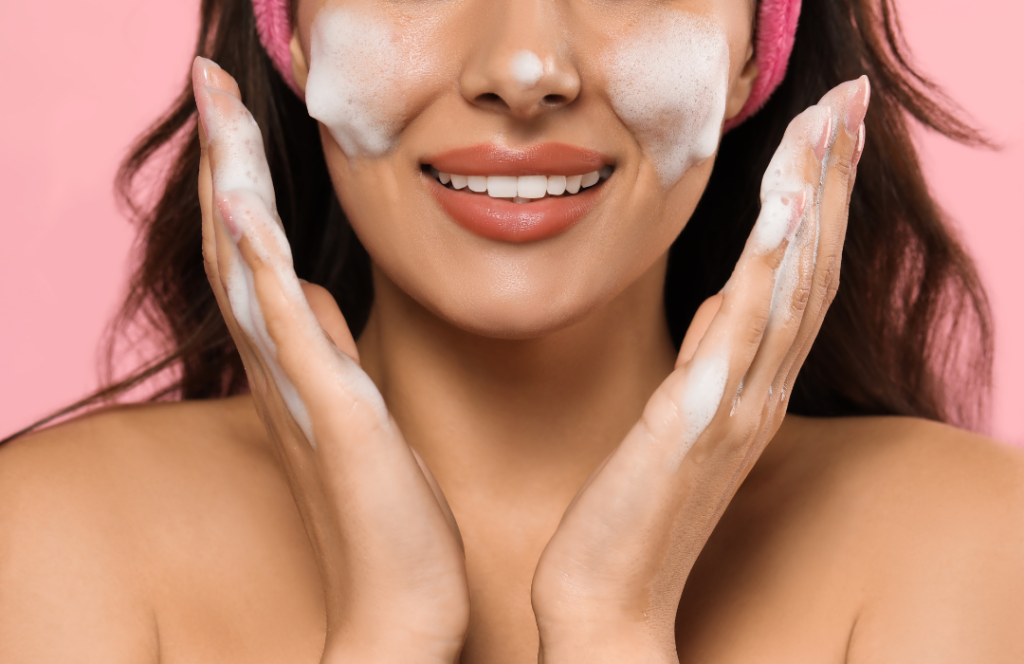
Washing your face with a mild soap or face cleanser is a crucial step in preventing breakouts. It helps get rid of the dirt, excess oil, and other things that can block your pores and lead to pimples.
You can also use the double-cleansing method for a thorough clean.
Start with gentle micellar water to remove the surface impurities, then follow up with a cleansing oil. This helps ensure that your skin is free from grime and makeup, reducing the risk of breakouts.
However, remember to be gentle when cleaning your face and avoid harsh soaps that can dry your skin excessively, leading to increased oil production and potential breakouts.
2. Don’t touch your face!!!
Try not to touch your face during the day because your hands can carry dirt and germs. Touching your face can transfer these things to your skin and lead to breakouts.
And never, ever squeeze or pick at pimples because it can make them worse and leave scars.
3. Stick with a consistent skincare routine
Consistency is key when it comes to preventing breakouts.
Stick to a regular skincare routine that includes washing your face, applying moisturizer, and using products that are designed to help with acne if you have it.
For example, if you’re using a specific treatment for acne, make sure to use it as directed on the package to prevent breakouts.
4. Watch your diet

Pay attention to how your skin reacts to the food you eat. Some people find that certain foods can make them break out.
If you notice that eating lots of sugary or greasy foods tends to give you pimples, you might want to cut down on those foods to help your skin stay clear.
Just keep in mind, what you eat can affect your skin’s health, which is why they always say, “you are what you eat.”
5.Manage your stress
Stress can make breakouts worse. Engage in activities like exercise or relaxation techniques, and make sure you get enough sleep to help keep your skin looking its best.
Taking a few minutes to do deep breathing exercises or simple yoga stretches when you’re feeling stressed can help your skin stay clear.
Wrapping Up
Purging occurs when active ingredients like retinol stimulate the shedding of dead skin cells and sebum, leading to temporary skin issues. If you find yourself in this phase, it’s advisable to stop using harsh methods that could exacerbate the situation.
Breakouts, in contrast, are unpredictable and can manifest at any time, often unrelated to the introduction of new products. They come in various forms and tend to linger.
Remember, patience is paramount in dealing with both purging and breaking, but understanding the differences between them can help you manage these situations more effectively.
More About Skincare Topic:
Face Oil Vs. Moisturizer: Which One Is Better For Your Skin?
9 Clear Signs Your Skin Barrier Is Damaged And How To Fix It

